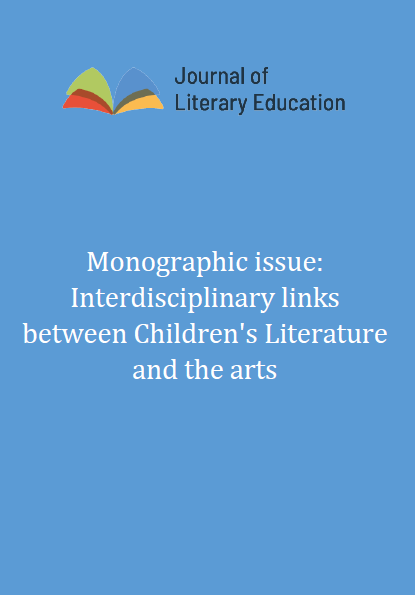The Art of “Including Art” in Animation: DreamWorks’ Intertextual Games for All
DOI:
https://doi.org/10.7203/JLE.1.12209 Abstract
Abstract
Art forms become interrelated when intertextual phenomena occur. The choice of previous art forms to create humour may seem to be a playful game, but it is the result of many kinds of inserted messages. Fourteen animated feature films by DreamWorks have been analysed and classified in depth (by using Sebeok’s (1986) intertextual categories, which were also described by Hatim & Mason (1990)), in order to demonstrate how animation is an art that encompasses other artistic productions. Firstly, art and animation will be defined in order to, secondly, use the corpus to exemplify the intertextual connections from other art forms. Lastly, the final quantitative and qualitative results will substantiate the conclusion that these productions by DreamWorks are an example of artistic cinematographic intertextuality.
Key words: animation, intertextuality, art forms, Children’s Literature..
Resumen
Las formas artísticas se interrelacionan cuando se pone en práctica el fenómeno intertextual. El uso de formas artísticas previas para crear humor puede parecer un juego pero es el resultado de la inserción de varios tipos de mensajes en un texto/discurso. Se analizan y clasifican en profundidad catorce películas de animación creadas por DreamWorks (se emplea para ello las categorías intertextuales propuestas por Sebeok (1986) descritas, a su vez, por Hatim & Mason (1990)), con el propósito de demostrar cómo la animación es un arte que engloba a otras producciones artísticas. En primer lugar, se definen los conceptos de arte y animación para, acto seguido, mostrar mediante el corpus cuáles son las conexiones intertextuales que provienen de otras formas artísticas. Los resultados cuantitativos y cualitativos permiten concluir que las producciones animadas de DreamWorks son un ejemplo de intertextualidad cinematográfica artística.
Palabras clave: arte, álbumes, museos, galerías, contexto.
Resum
Les formes artístiques s’interrelacionen quan es posa en pràctica el fenomen intertextual. L’ús de formes artístiques prèvies per crear humor pot semblar un joc però és el resultat de la inserció de diversos tipus de missatges en un text/discurs. S’analitzen i classifiquen en profunditat catorze pel·lícules d’animació creades per DreamWorks (s’hi empra per a això les categories intertextuals proposades per Sebeok (1986) descrites, d’altra banda, per Hatim & Mason (1990)), amb el propòsit de demostrar com l’animació és un art que engloba d’altres produccions artístiques. En primer lloc, es defineixen els conceptes d’art i animació per a, tot seguit, mostrar mitjançant el corpus quines són les connexions intertextuals que provenen d’altres formes artístiques. Els resultats quantitatius i qualitatius permeten concloure que les produccions animades de DreamWork són un exemple d’intertextualitat cinematogràfica artística.
Paraules clau: animació, intertextualitat, formes artístiques, literatura infantil i juvenil.
 Downloads
Downloads
Published
-
Abstract857
-
Cover296
-
PDF972
Issue
Section
License
![]()
This work is licensed under a Creative Commons Attribution-NonCommercial-NoDerivatives 4.0 International License.
Authors who publish with this journal agree to the following terms: Authors retain copyright and grant the journal right of first publication with the work simultaneously licensed under a Creative Commons Attribution License that allows others to share the work with an acknowledgement of the work's authorship and initial publication in this journal. Authors are able to enter into separate, additional contractual arrangements for the non-exclusive distribution of the journal's published version of the work (e.g., post it to an institutional repository or publish it in a book), with an acknowledgement of its initial publication in this journal. Authors are permitted and encouraged to post their work online (e.g., in institutional repositories or on their website) prior to and during the submission process, as it can lead to productive exchanges, as well as earlier and greater citation of published work (See The Effect of Open Access).



